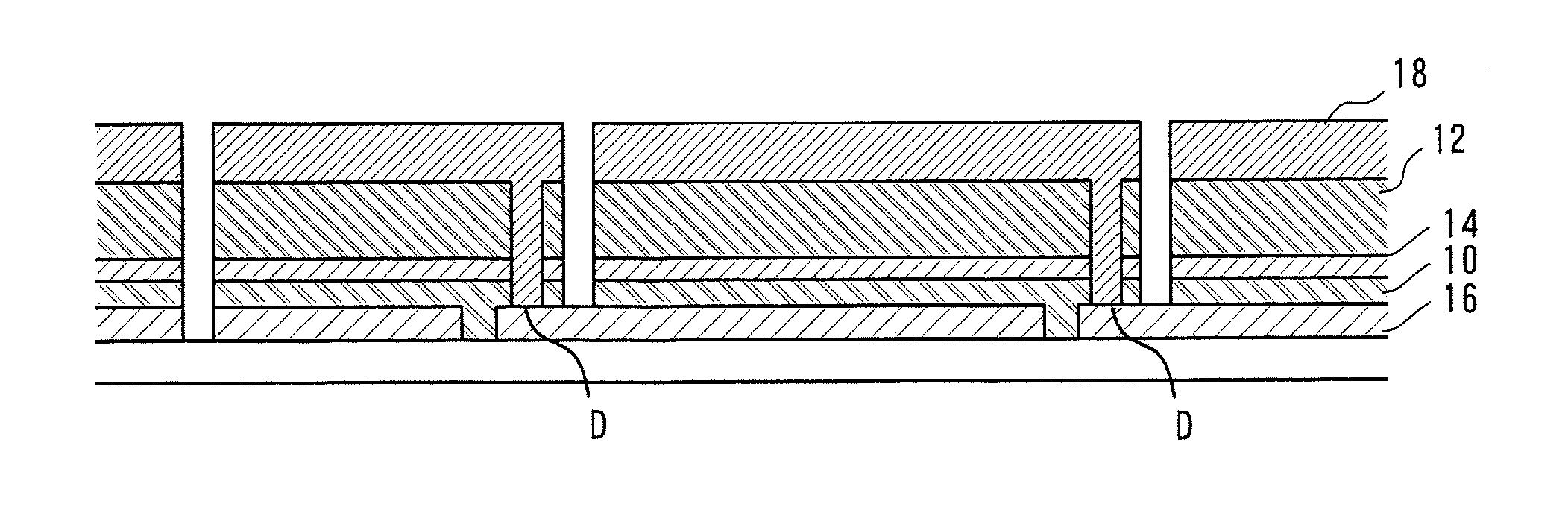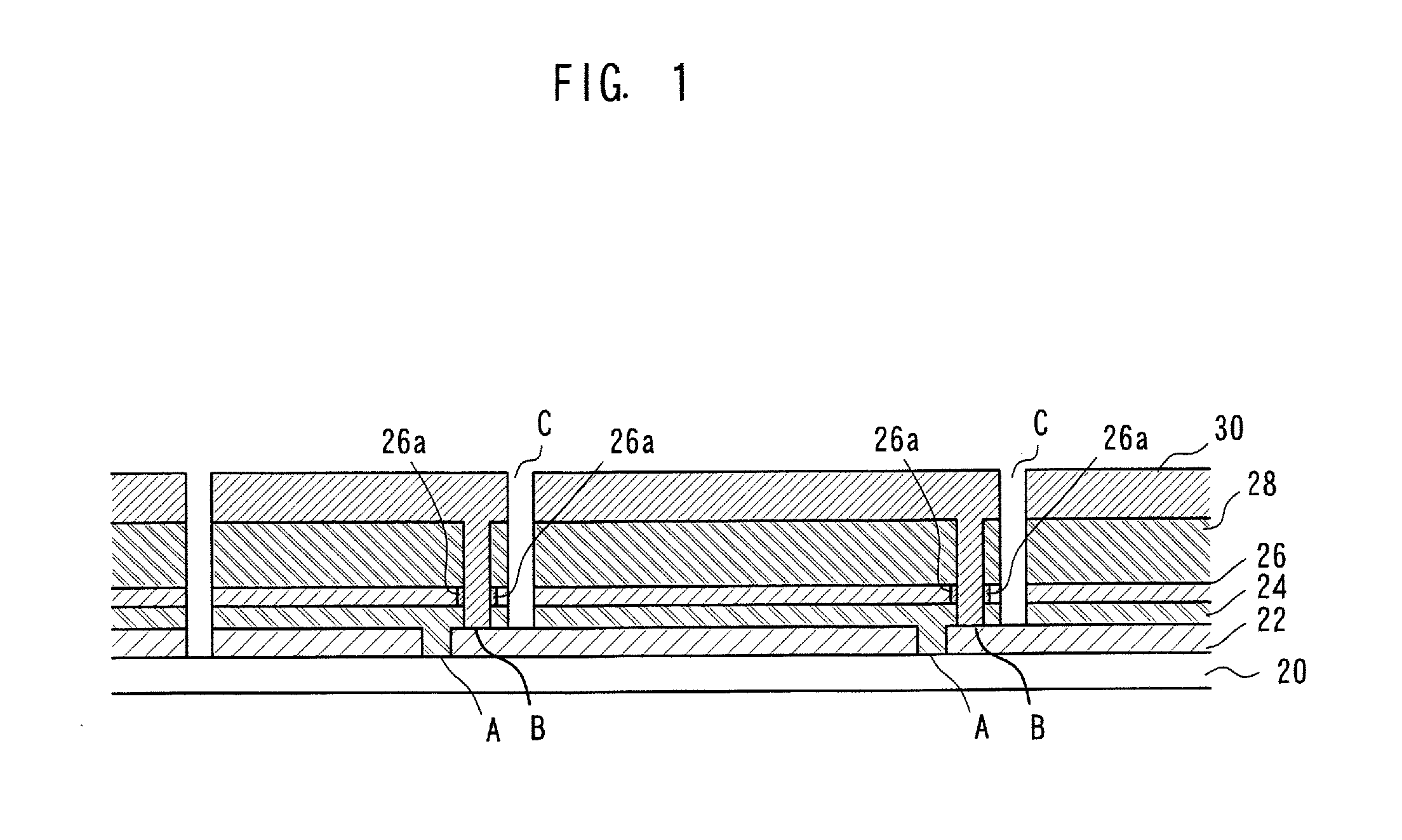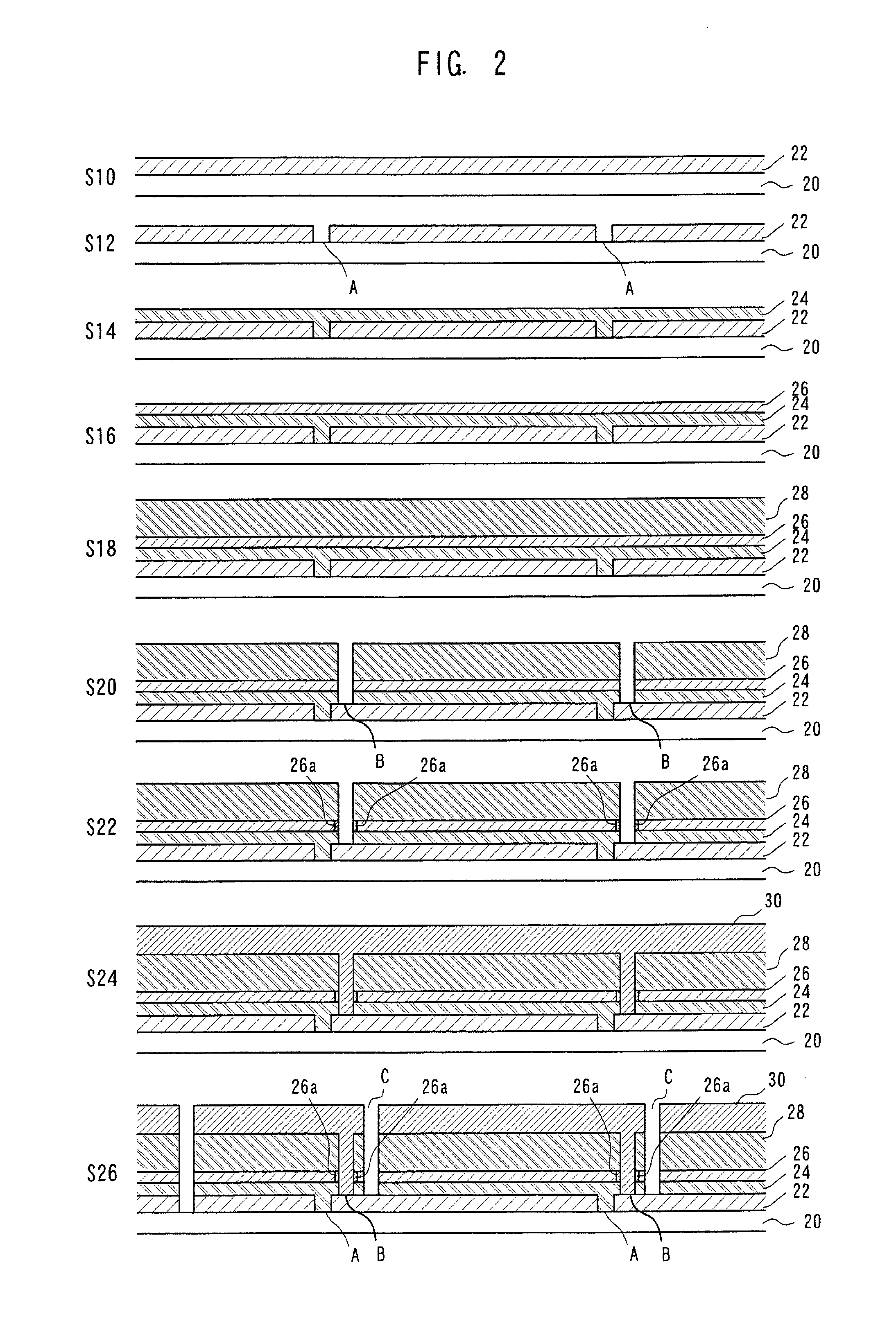Photovoltaic device and manufacturing method for a photovoltaic device
a photovoltaic cell and manufacturing method technology, applied in the direction of solid-state devices, pv power plants, semiconductor devices, etc., can solve the problem of lowering the characteristics of the photovoltaic cell units themselves, and achieve the effect of suppressing the reduction of characteristics
- Summary
- Abstract
- Description
- Claims
- Application Information
AI Technical Summary
Benefits of technology
Problems solved by technology
Method used
Image
Examples
example
[0033]A surface electrode 22 being an SnO2 film having a textured structure was formed on a glass substrate 20, and an isolation trench A of 40 μm line thickness was formed. After that an amorphous silicon first photovoltaic cell unit 24 having an i-layer film thickness of 250 nm was formed.
[0034]After forming the first photovoltaic cell unit 24, a ZnO film having a film thickness of 50 nm and including aluminum as a dopant was formed as the intermediate layer 26. A microcrystalline silicon second photovoltaic cell unit 28 with an i-layer film thickness of 2000 nm was then formed.
[0035]After formation of the second photovoltaic cell unit 28, an isolation trench B of line width 50 μm was formed using the second harmonic of a Nd:YAG laser of wavelength 532 nm. After that, RF plasma processing is carried out in a nitrogen (N2) or ammonia (NH3) gas atmosphere, causing a higher nitrogen content in the end section 26a of the intermediate layer 26 than in other regions. After nitriding tre...
PUM
 Login to View More
Login to View More Abstract
Description
Claims
Application Information
 Login to View More
Login to View More - R&D
- Intellectual Property
- Life Sciences
- Materials
- Tech Scout
- Unparalleled Data Quality
- Higher Quality Content
- 60% Fewer Hallucinations
Browse by: Latest US Patents, China's latest patents, Technical Efficacy Thesaurus, Application Domain, Technology Topic, Popular Technical Reports.
© 2025 PatSnap. All rights reserved.Legal|Privacy policy|Modern Slavery Act Transparency Statement|Sitemap|About US| Contact US: help@patsnap.com



